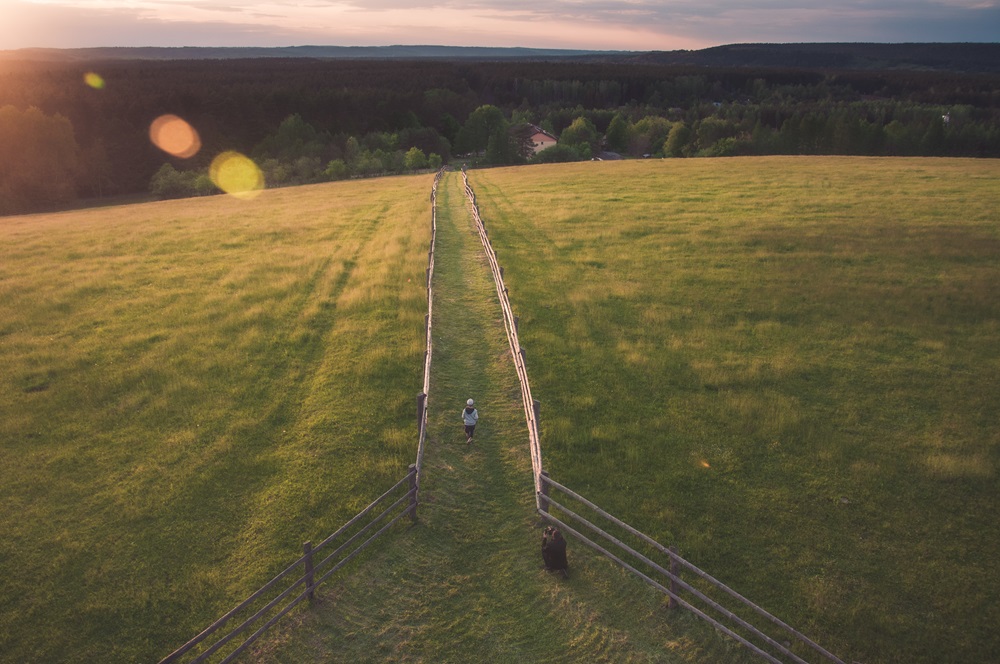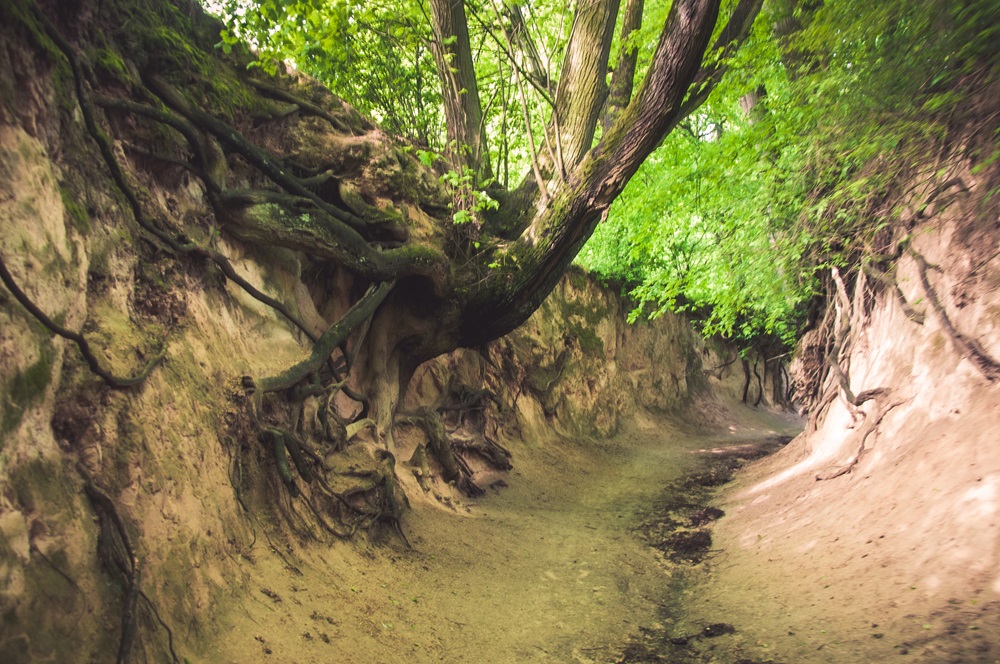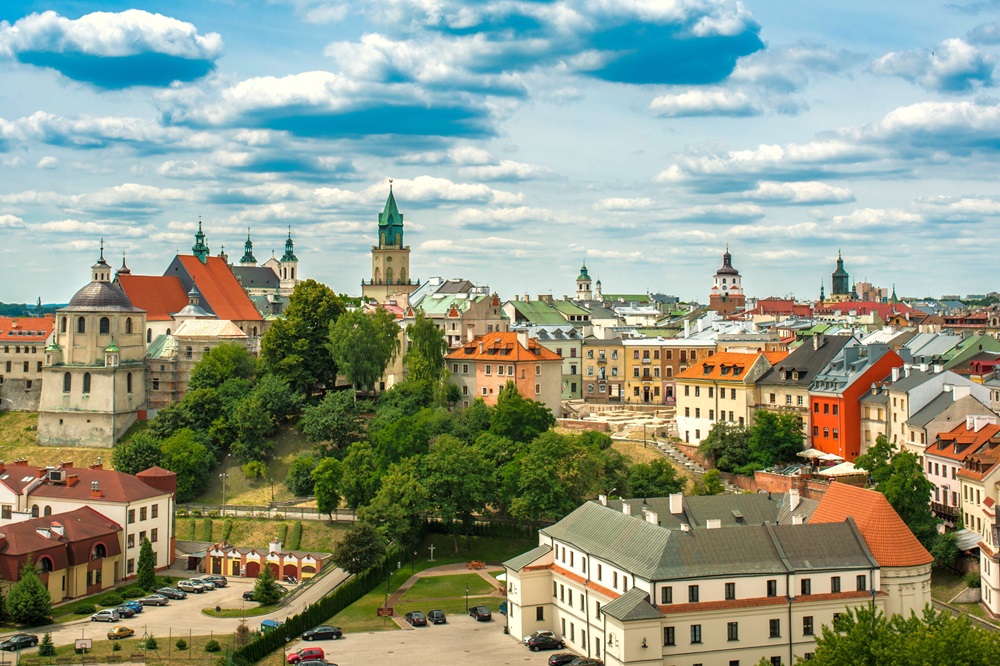3 of the 12 holders of the Polish Tourist Brand title are located in Lubelskie region. These are Roztocze, the Land of Loess Gorges, and the City of Lublin. The prestigious distinction is an assurance of the rich offer and high quality of tourist services.
ROZTOCZE
Roztocze is an extraordinary geographical region with exceptional natural, cultural and historical values. In Poland, it covers part of the Lubelskie and Podkarpackie Voivodeships. It is characterised by dense forests, sparse buildings, silence and a climate and atmosphere unique in Poland. The most valuable forest areas are protected within the Roztocze National Park - the most forested among Polish parks. Numerous landscape parks and nature reserves have also been established here. It is a place with unique landscapes, a natural and cultural borderland. In 2019 r. Roztocze Transfrontier Biosphere Reserve was included on the elite UNESCO Biosphere Reserve Network List. Roztocze is the sunniest region in Poland, the so-called Sunny Pole of Poland. The clean air is due to huge forest complexes and the absence of heavy industry.
It is a unique region in the country, where, apart from exceptional natural advantages, there are tourist attractions for people of all ages. It is an ideal place for active and cultural tourism. This is facilitated by marked out and marked hiking trails (over 100 in total), bicycle routes, including the Central Cycling Route of Roztocze and part of the Easte of Poland Cycling Trail Green Velo, ski slopes and routes, car routes and a rich offer of canoeing trips. Many cultural events take place here, including the Summer Film Academy in Zwierzyniec, the Capital of Polish Language Festival in Szczebrzeszyn, the Borderland Culture Festival "Folkowisko" in Gorajec, among others. In Roztocze, there are interesting monuments of architecture in the Lublin Renaissance style, as well as unique monuments of wooden architecture, e.g. the Orthodox Church Complex in Radruż, listed on the UNESCO World Heritage List. A real feast for the senses is Roztocze cuisine based on local products: buckwheat and millet groats, soft fruit, game or aromatic herbs.
Learn more at: www.roztoczetravel.pl

LAND OF LOESS GORGES
It is one of the most touristically interesting places in the country. Charming landscapes, naturally valuable areas, unique loess gorges, and interesting architecture create perfect surroundings for leisure and rest. The visitors appreciate health values and professionally prepared offer of Nałęczów, amazing cuisine based on ecological local products, and a possibility to rest away from the big cities. The area is rich with a net of various tourist trails, perfect for walking, cycling, nordic walking, or horse riding. The fans of active tourism can use the opportunity of kayaking to get to know the most picturesque fragments of the Lesser Poland Gorge of the Vistula river.
One of the most popular tourist towns in Poland is Kazimierz Dolny, located within the Land of the Loess Gorges. It owes its attractiveness to glorious Renaissance architecture, Vistula river, the closeness of the loess gorges, and artistic vibe. It has become a perfect place for open-air painting and photography sessions and a meeting spot for the local craftsmen. It's also known for cultural endeavours, as well as numerous and very attractive festivals, such as National Festival of Folk Bands and Singers, Film and Art Festival Two Riversides, and music festival Kazimiernikejszyn. The obligatory ideas for a stay in Kazimierz Dolny include a visit at the Goldsmith Museum (a branch of the Nadwiślańskie Museum), Parish church, as well as taking a long hike through the loess gorges. A famous local snack is a rooster-shaped bread.
The Land of Loess Gorges has a vast offer for those interested in culture, art, and architecture. That's why it's worth to pay a visit to the Czartoryski Museum in Puławy surrounded by a beautiful park, St. Florian and St. Catherine's church in Gołąb, sanctuary in Wąwolnica, churches in Końskowola, the Museum of Blacksmith's Art and the Forge in Wojciechów, the Museums of Stefan Żeromski and Bolesław Prus in Nałęczów, and many other lesser known yet very attractive places.
Learn more at: www.kraina.org.pl

LUBLIN
The capital of the voivodeship is one of the most attractive cities in Poland. Original in over 70% architecture of the Old Town attracts the visitors from all over the world. Well-preserved area, consisting of mainly Renaissance buildings with traces of Gothic, Baroque, and Classicism, was awarded with the status of Historic Monument. The city's multicultural, over 700-year history is confirmed by numerous monuments. The most valuable one is the Holy Trinity Chapel at the castle hill, with 15th-century Ruthenian-Byzantine frescoes covering the whole interior. Just like the Basilica of the Dominicans, this unique place remembers the event of the conclusion of the Polish-Lithuanian Union in 1569. The objects have been awarded the European Heritage Label. Lublin is a city of young and creative people. Its academic-ness is based on the potential of five state universities and four private colleges. Annual festivals emphasize the atmosphere of openness, respect for culture, and the need to share a modern approach to tradition. Night of Culture, Carnaval Sztukmistrzów, Re:Tradition Festival, or the European Festival of Taste change the city into a space of artistic activity. Both citizens and tourists appreciate the offer of numerous museums, contemporary art galleries, theaters, concert halls, and institutions, which, like the Centre for the Meeting of Cultures, present the achievements of world-famous artists.
The history of the city is strongly associated with the Jewish community that lived here until the end of World War II. Relatively few, although impressive and important objects related to Jewish culture (such as Yeshivas Chachmei or the Old Jewish Cemetery) and the Holocaust (the State Museum at Majdanek) are incentive for the arrival of numerous groups of tourists from Israel. The municipal institution Grodzka Gate - NN Theatre deals with the cultivation of the memory of this aspect of the Lublin region's history. The presence of Jewish nationality was also marked in the Open-Air Village Museum in Lublin, ne of the largest in Poland, in the sector named: "A Provincial Town of Central Europe from the 1930s". The museum area is divided into 7 sectors: Lublin Upland, Roztocze, Vistula River Region, Bug River Region, Podlasie, Manor complex, and Provincial Town. It provides collections of wooden and brick architecture and ethnographic mementos, whose history dates back to the 17th century. Visitors have the opportunity to participate in special events presenting the work, culture, customs, and cuisine of the people living in the former Lublin region.
Learn more at: www.lublin.eu/turystyka

Polish Tourist Brands is a project implemented by the Ministry of Development in cooperation with Polish Tourist Organization, which aim is to support creation of the so called tourist regions, which brand, high quality of service, and coherent marketing are meant to encourage traveling.




